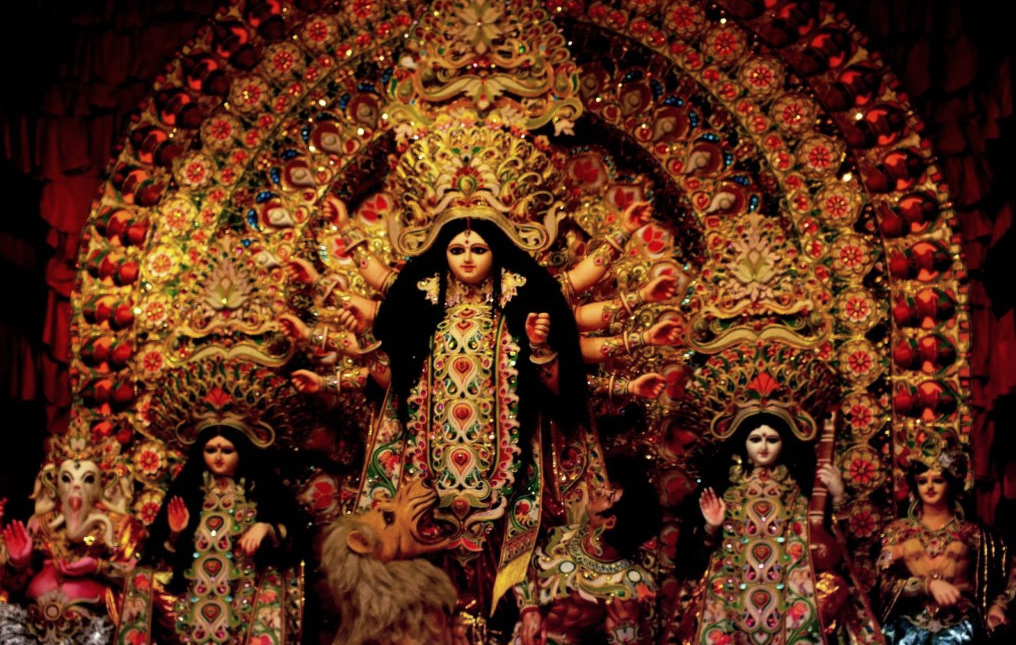Not every sense of belonging comes from adoption- try adaptation.
It was in 2002, I was merely two and half years old, when I went on my first abroad trip to Uttar Pradesh, India. That year, Ramadhan and Diwali came around the same time; while my parents broke their fasts at dusk, I stood awestruck at the window, hearing the Azaan and fireworks at the same time, every bit of the sky lit up with cheer and color.
This is something Delhi is so apt at providing, that the young me asked her parents, “Is it Diwali in Dhaka, too?”
It’s eerie to believe that I had such vivid memory at that age. We went down for dinner walking the lamp-lined floors, greeted “Happy Diwali” occasionally and coming across traditional graffiti. Thanks to Karan Johar’s contribution to my Bollywood addiction, I was singing along to the Aarti happening at a temple beside the eatery.
A Temple Run
The first time I visited a temple was when I turned seven and had more awareness about my surroundings. Most Muslim kids my age had grown up without these experiences, which goes to show the stigma around participation in beautiful festivals such as Durga Puja, or Diwali.
Dhakeshwari Temple is only a 10-minute rickshaw ride from my grandparents’ place; I was mesmerized the moment I laid eyes on the structure: it vaguely reminded me of Tagore’s Jorasako Mansion that we had visited back in Kolkata.
It was the eighth day (ashtami) of Durgotshob, and my mother made sure we reached in time for the “Kumari Pujon”- a veneration where unmarried girls are symbolically worshiped as Goddess Durga, because she was a symbol of strength and heroism.
Dressed like brides, the little girls were put on a pedestal, and the rarity of it was more fascinating to me than the act of worship.
I didn’t have to believe in it to feel the uplifting, the aura was serene enough to ensnare me with the fragrance of fresh sweets and agarbati.
The Blight
Over the years, I have been to a number of Durga Puja celebrations, made many Hindu friends, celebrated Eid and Puja together, went to Hindu weddings; people co-exist, without believing in each other’s beliefs. I have adapted myself to it, not to prove a point, but to point out how important it is to submit to the joys of one another, instead of poking at flaws of their faith.
Muslims helping to organize Pujas is a common scenario in Bengal. They often participate through member committees, constructing pandals and devising alternate traffic flows during the festivities. A Muslim girl, rescued from a human trafficking operation earlier, recounted her experiences last year. “I had been to Durga Puja pandals before but never participated in it,” she said. “This is the first experience for me where I am doing it by following all rituals and traditions. We are enjoying it and have accepted it as one of our festivals.”
However, millennials struggle to find our grounds in a society full of liberals, believers, extremists, atheists and agnostics, aided by political correctness or lack thereof.
Hindus waiting for the Azaan to end to begin their Puja music, or Muslims helping in the organisation of Puja- these should not be surprising concepts, but the most normal way of being. Our society is so far from harmony, that any silver lining becomes a light at the end of a tunnel.
In a world of make-believe and parallels, we can only hope that a week of festive cheer brings prosperity to everyone.
